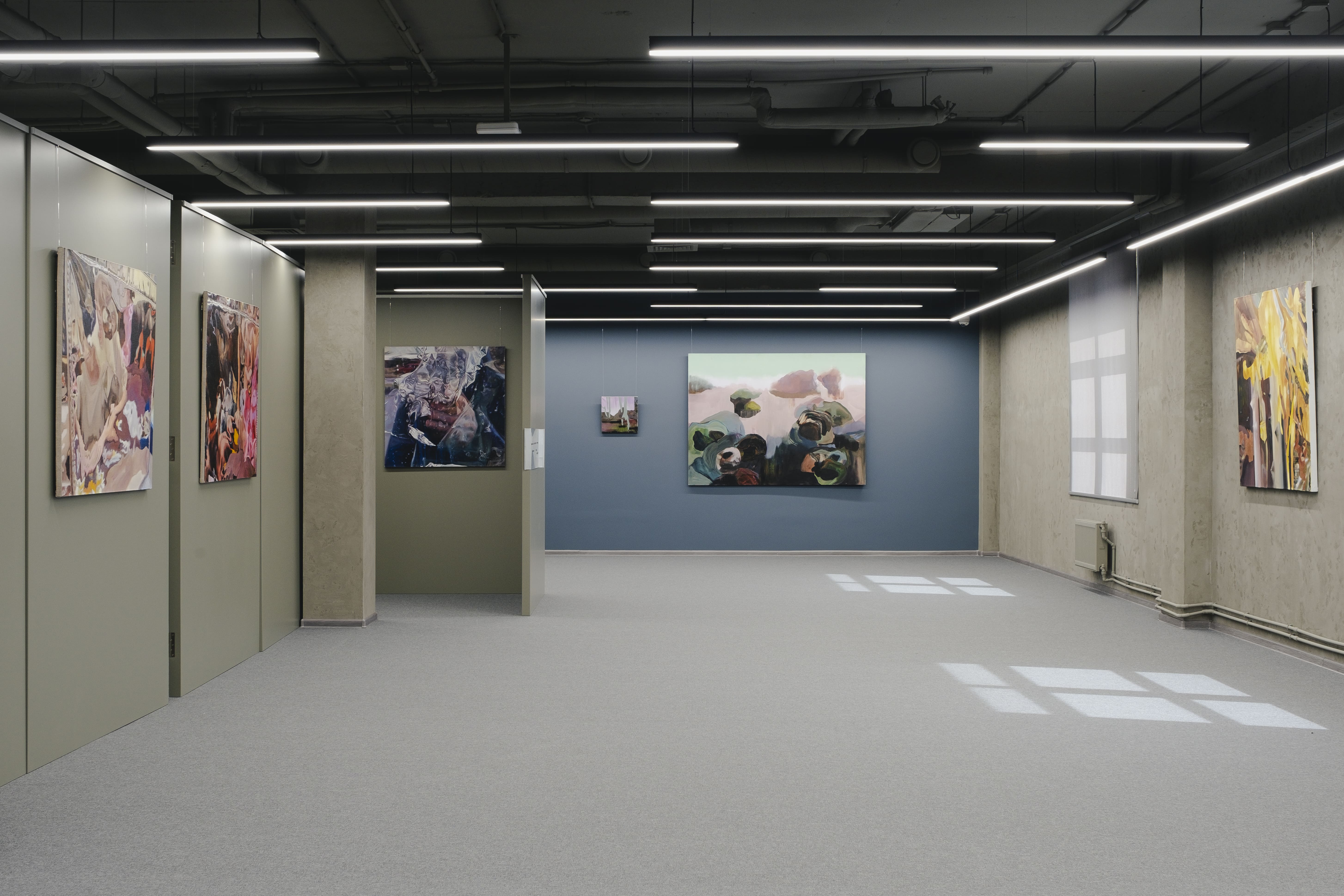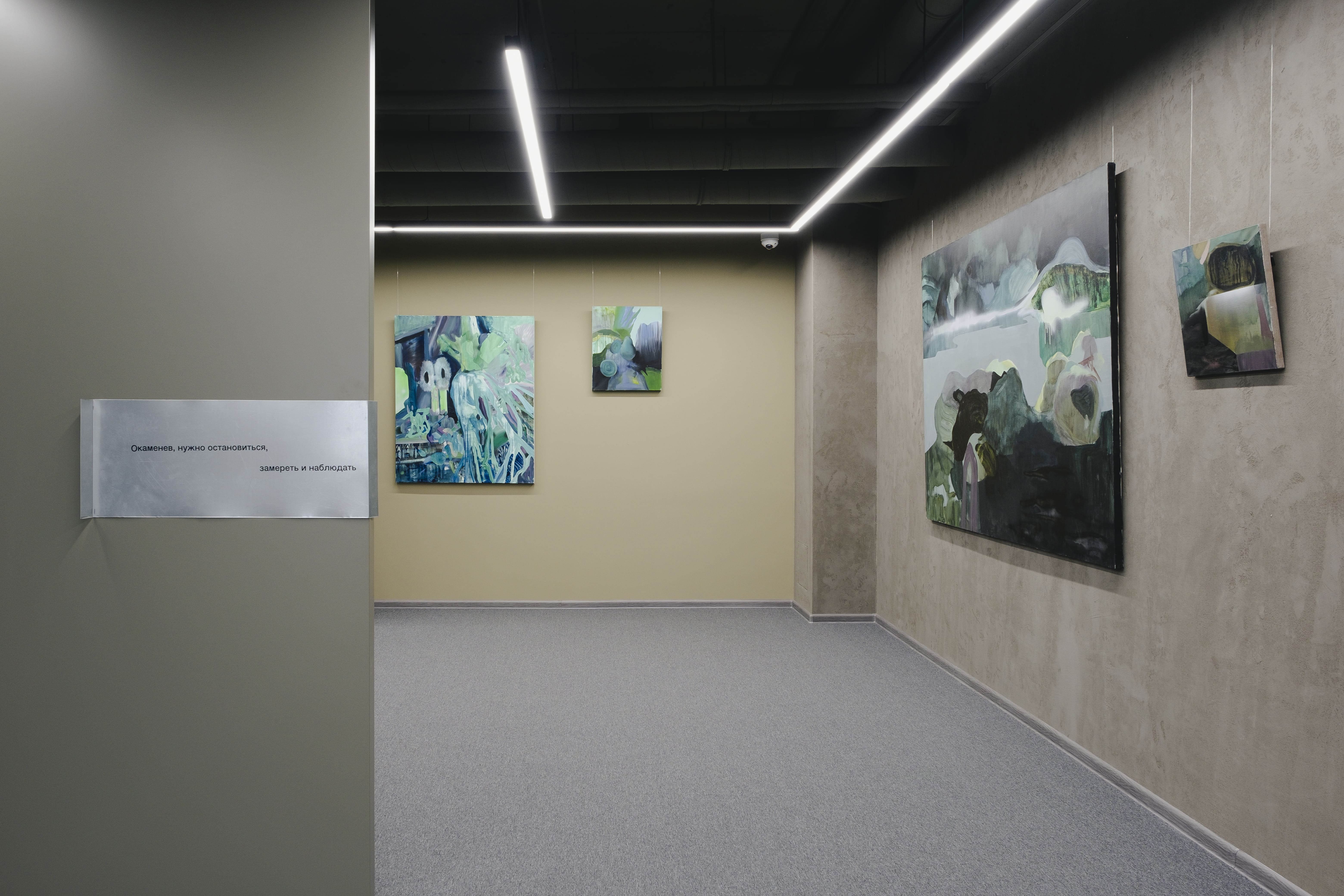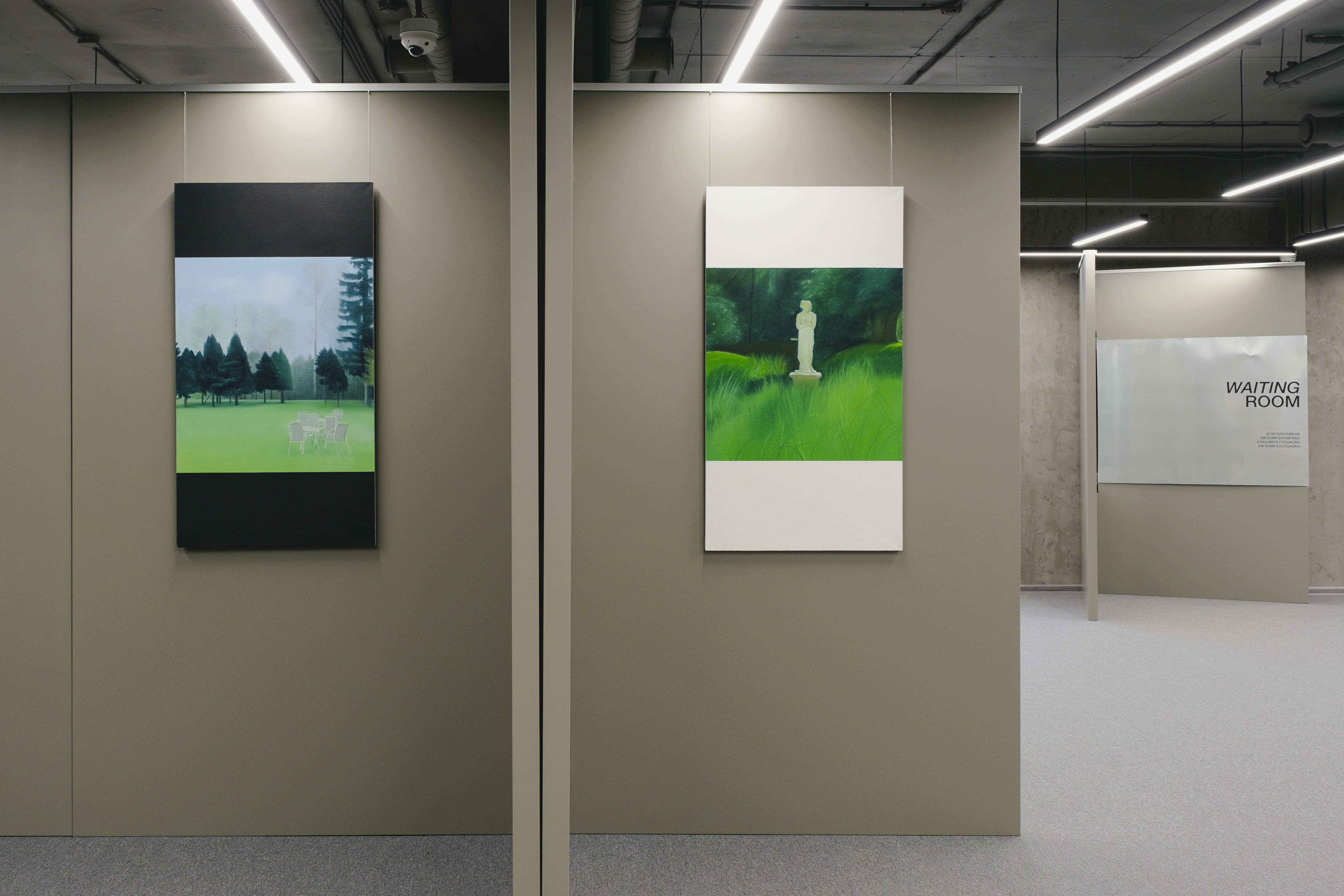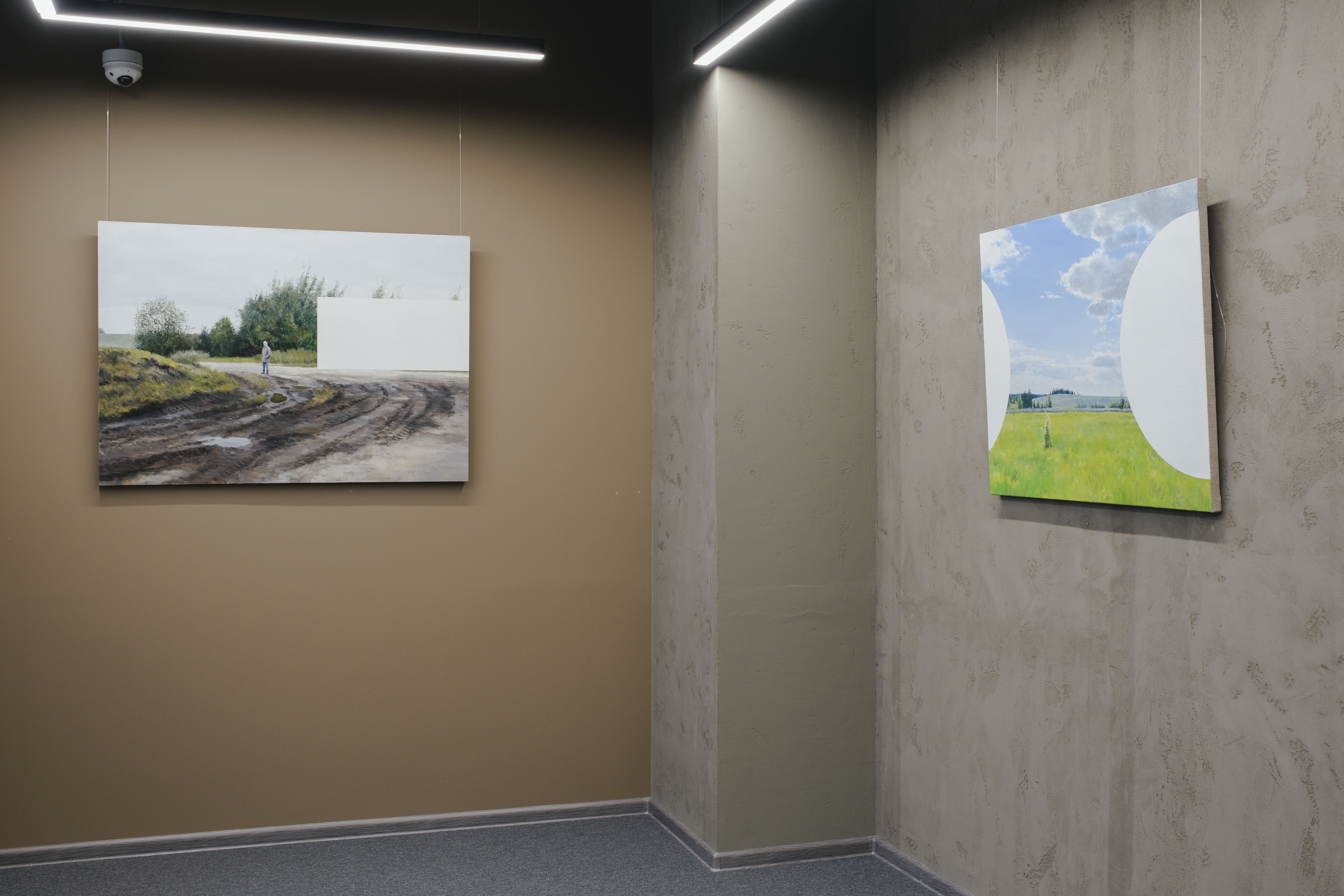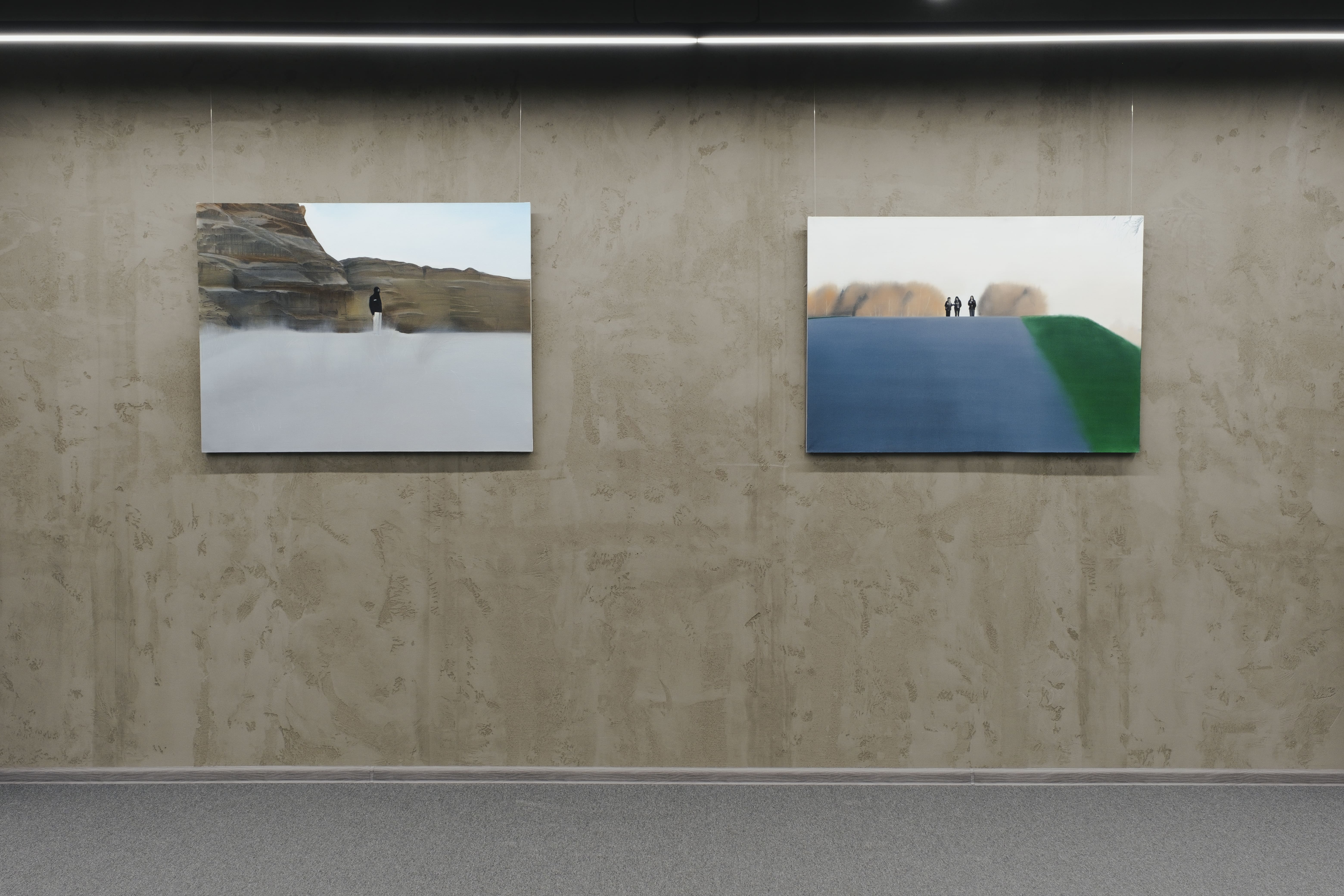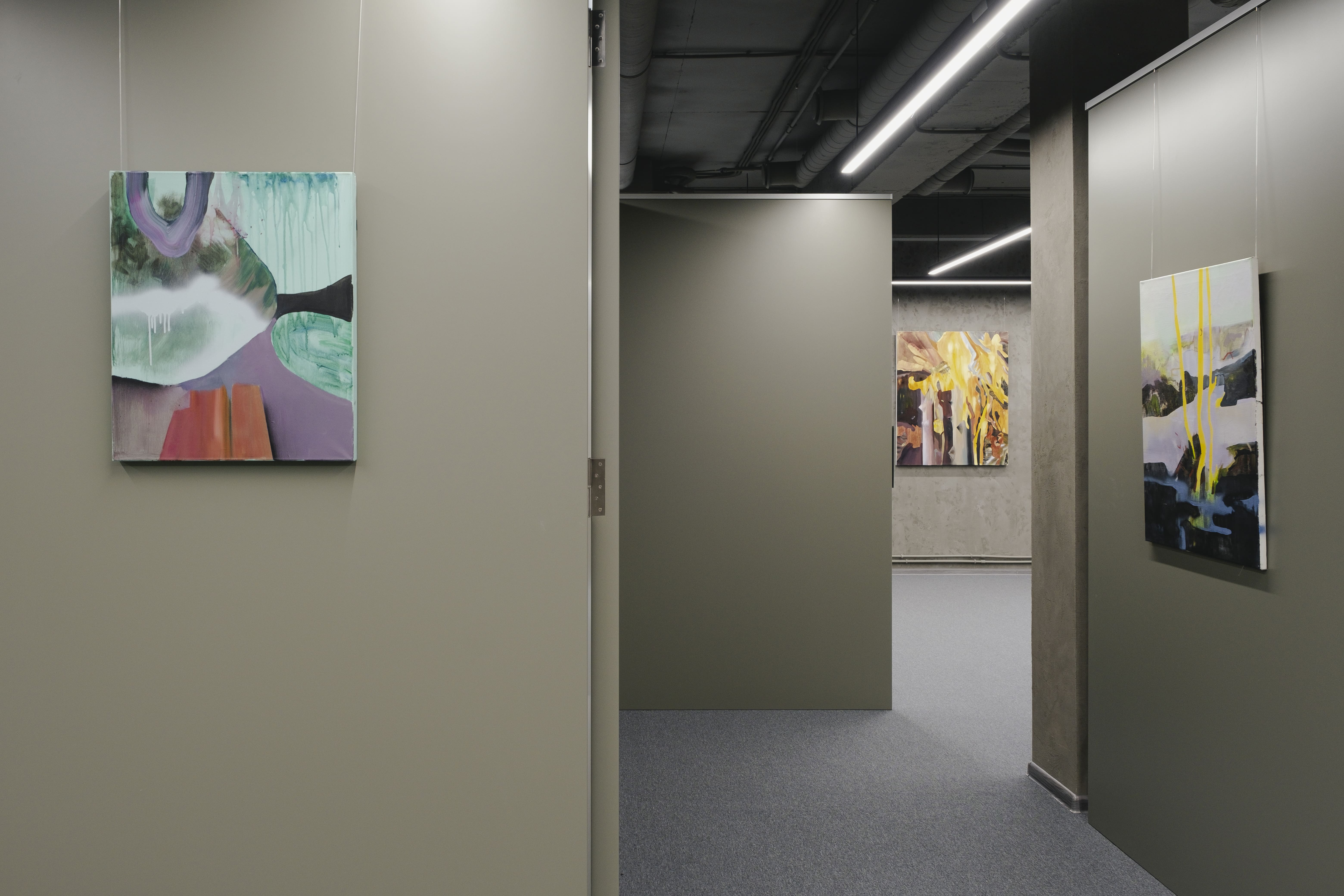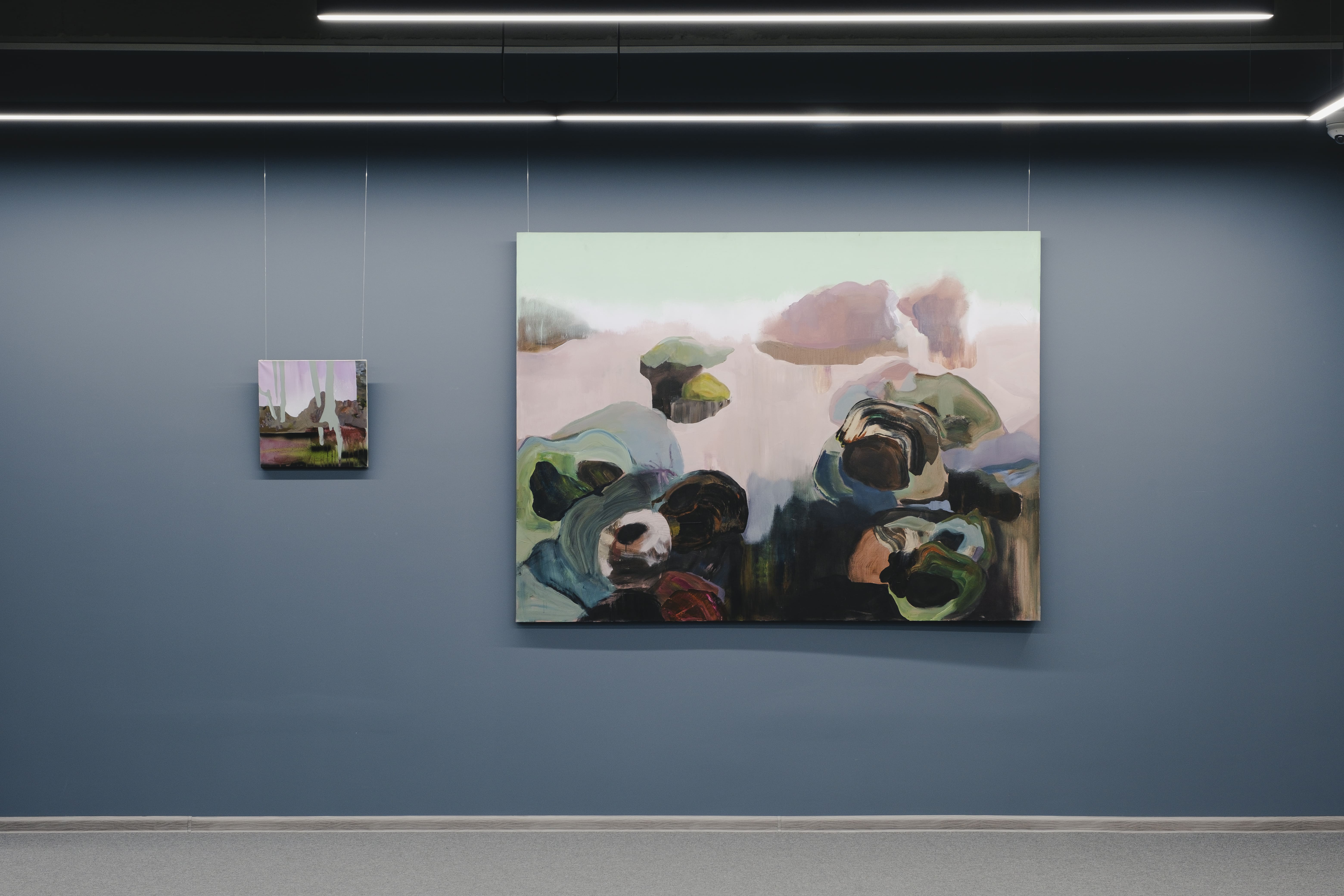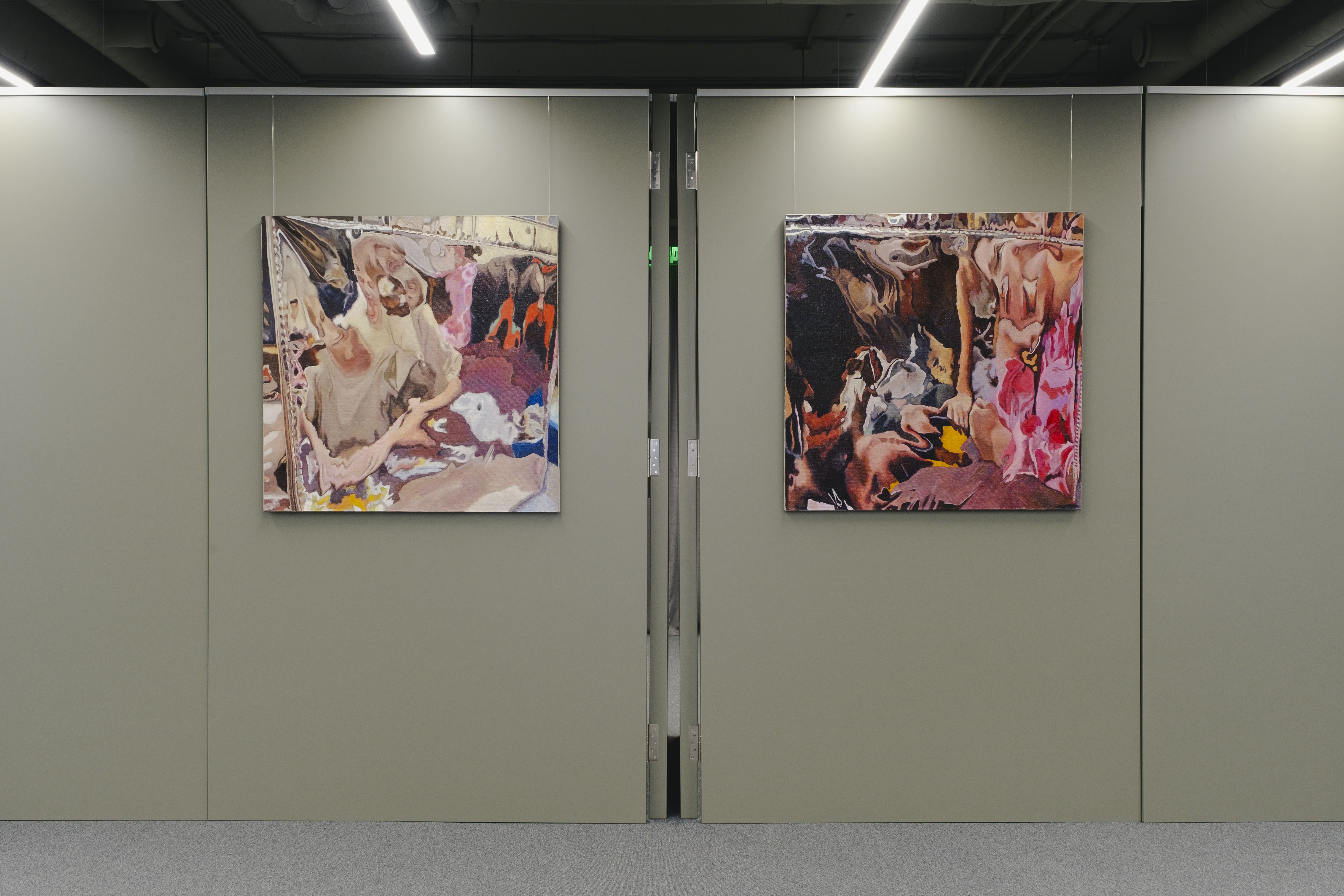WAITING ROOM
Being haunted does not mean being present,
and the ghostly apparition must be included
into the organization of the concept itself.
Jacques Derrida
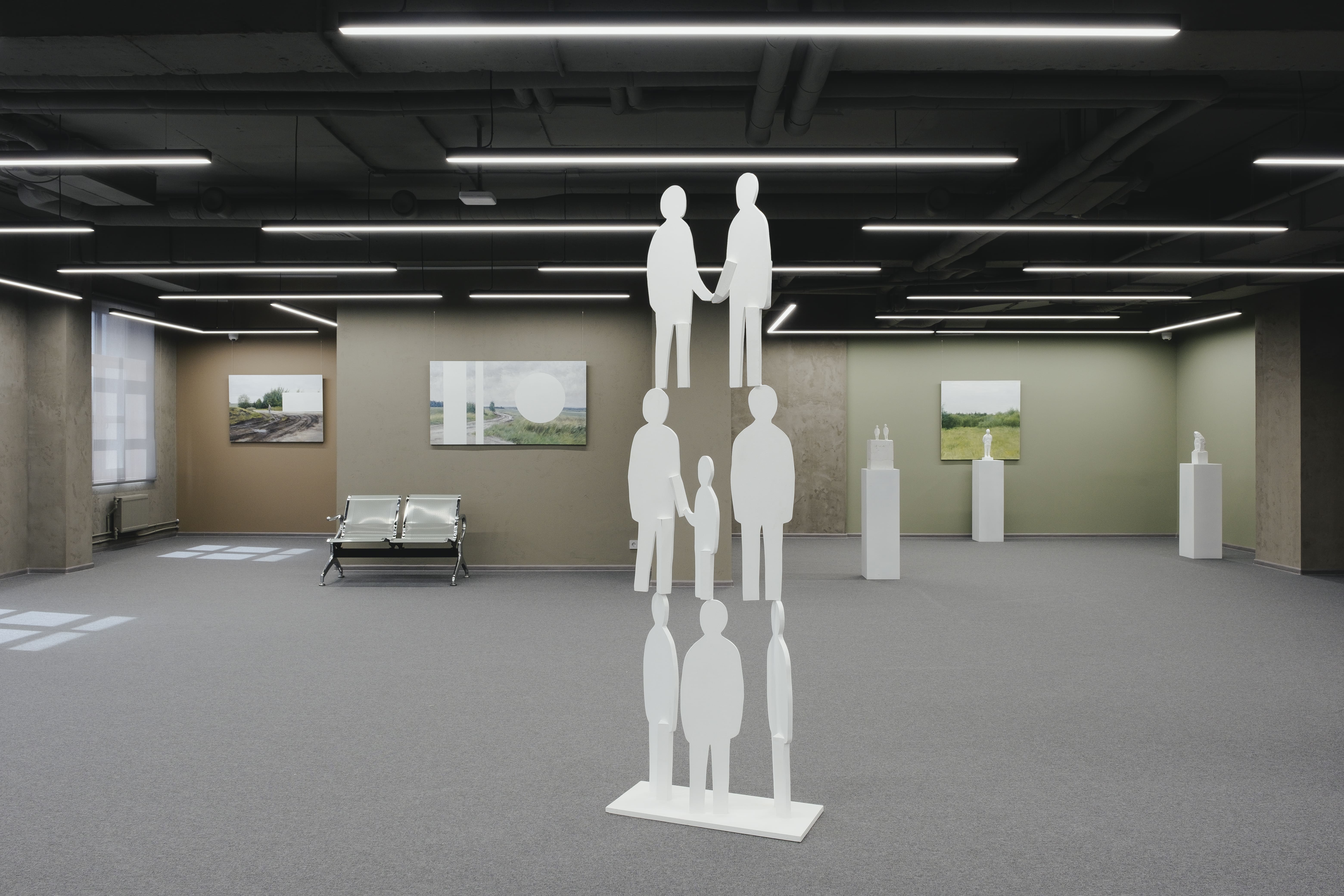
Photo: Evgeniya Baranova
WAITING ROOM
“Not quite now, never again” is the phrase that inspired writer Alan Garner's novel The Owl Service. It succinctly describes what has been happening in recent decades. The dynamic growth and changing structure of cities are redefining the formats of our coexistence. Spaces are taking on parallel meanings, becoming suitable for living and working, solitude and communication at the same time. New places where the personal and the collective meet are also emerging — certain transit zones that we pass through but do not inhabit.
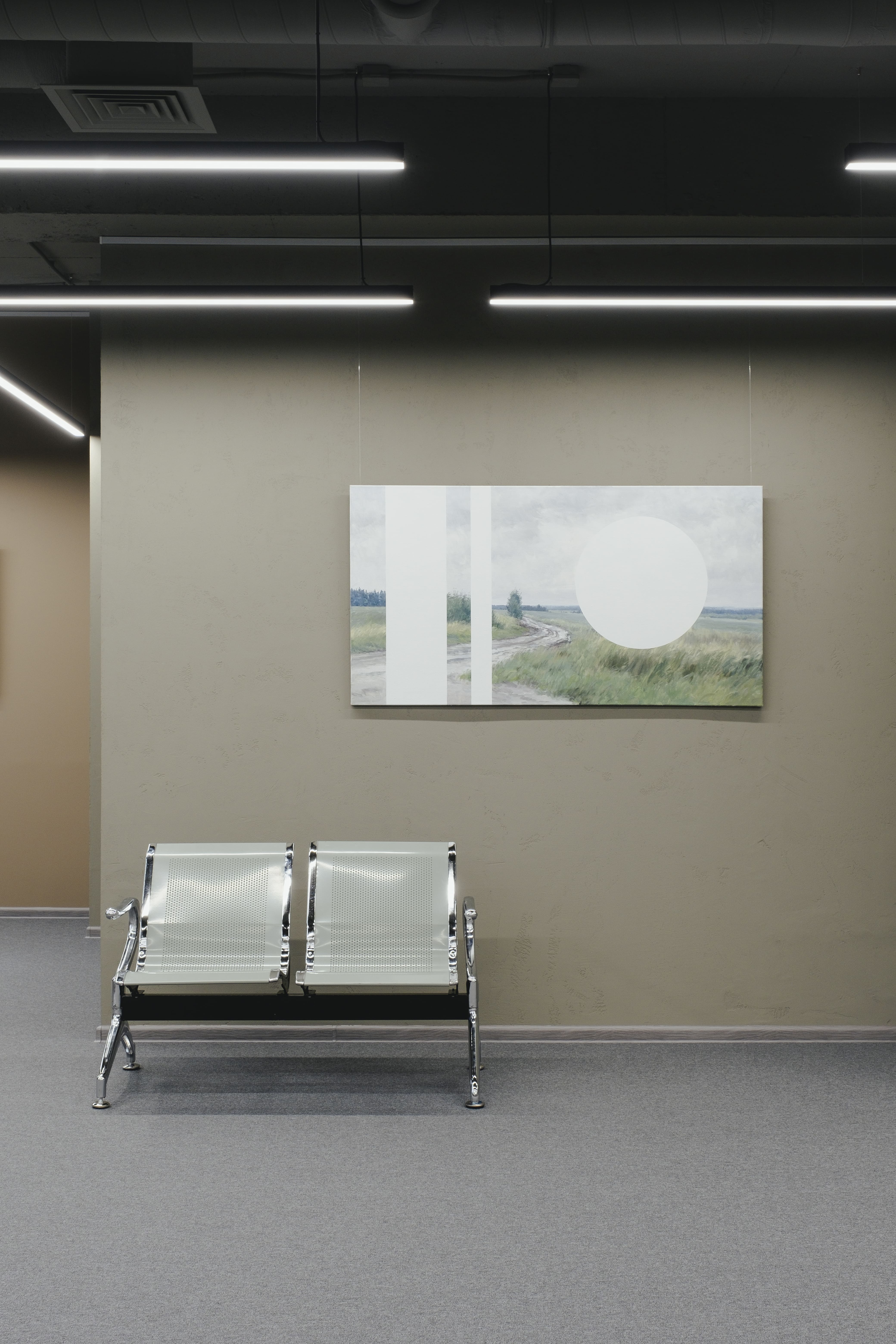
According to Marc Auger, the destruction of spatiality is reinforced by the emergence of “non-places” — airports, shopping centers, offices, and other public places that resemble each other despite having different functions. Not only space is disappearing, but also time: the present is gone, but the future is still not coming.
In the project, the artists question the boundaries of the individual and the public, reflecting the peculiarities of modern man's perception and his interaction with the space forming around him, both internal and external. Conceptually, the exhibition space mimics a waiting room and is divided into two zones by a transit corridor: external reality and internal states. Similar to the process of waiting for a flight that we arrived too early for or that was postponed due to circumstances independent of us, we get into the exposition of reflection on the events that have already happened and those that are only to come.
In Egor Plotnikov's recognizable landscapes appear so-called subtractions — absent images in which we conjure up images on our own. Pure white stripes and geometric figures leave the viewer the opportunity to “upload” his own memories of places quite familiar to everyone, which, as in dreams, appear only partially, stuck between reality and the unconscious. Evgenia Buravleva's works, on the contrary, document concrete images-publications in social networks, a digital transit site where contemporary reminiscences are collected. The artist retains the framing and foreshortening of the “sources”, but uses her usual visual techniques, thus combining the traditions of painting and the Internet context. The series “Mirages” by Evgeniya Kosushkina captures the process of transformation, transition from one form to another. The visible world in her artworks melts, spreads, bends and acquires a new structure-reality. Liza Glushkova creates metaphysical universes, placing them in the format of colorful scenery. This synthetic world becomes a prototype of a certain inner labyrinth, the conditions for passing through which are adaptability and transformation in time with the frozen changes.
The project “Waiting room” is an attempt to reflect the state of absent space and time, a situation in which we are caught between a past that has already passed away and a future that has not come.
